If there is a single species that typifies the potential when it comes to reintroductions, then it is surely the Large Blue butterfly. This year has proven to be exceptional, not just in terms of bucking the downward trend seen in many of our butterflies, but the impact that this reintroduction and its site management is having to the benefit of other species. The once-extinct Large Blue butterfly, reintroduced to the UK in 1983, flew in its greatest numbers since records began on the largest number of sites in 2022. Thanks to meticulous conservation management by a partnership of scientists and conservation bodies, south-west England now supports the greatest concentration of Large Blues known in the world.
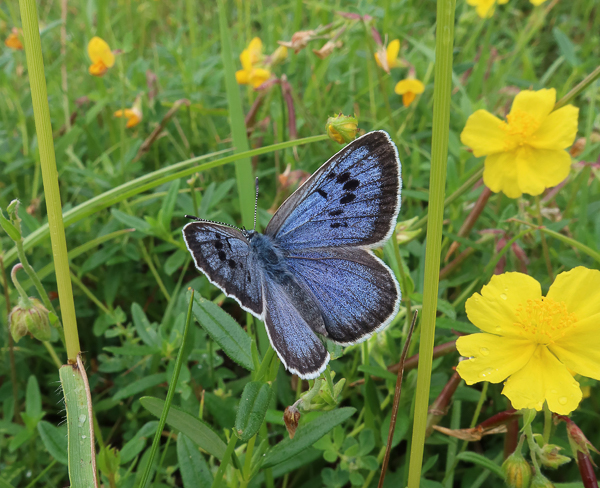
A fresh Large Blue basking among Rockrose and Birds-foot trefoil in one of two new colonies re-introduced to a National Trust Cotswold site – the first Large Blues there for 150 years © David Simcox
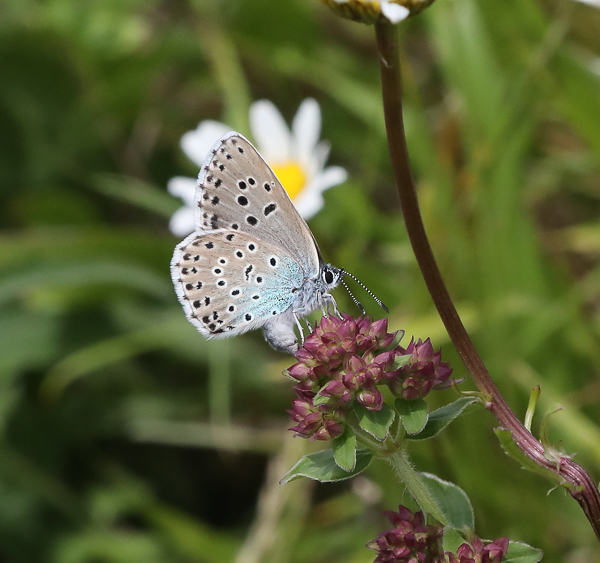
Female Large Blue laying egg on flowerbud of marjoram on ‘New Embankment’ (Somerset), one of five new sites created from scratch starting with limestone ballast. © Jeremy Thomas
The initial reintroductions have been undeniably successful and now twelve new sites are being restored to flower-rich meadows suitable for the Large Blue - ranging from arable land to degraded downland. Such sites already support up to a third of the UK population of Large Blues, up from just 7% in 2019.
The knock-on effect of such restoration has resulting in wild meadowland that also provides ideal breeding grounds for numerous other rarities that share the Large Blue's habitat - the extremely rare Pasqueflower and Cut-leaved self-heal, together with up to twelve species of orchid - Musk, Fly, Bee, Green-winged, Scented, Pyramidal, Spotted, Early purple, Greater butterfly, Autumn lady's tresses, Narrow-leaved helleborine, and White helleborine. A remarkable number of insects have increased on or newly colonised the twelve restorations. Nationally threatened species include the Shrill carder bee (UK's second most endangered bumblebee), Rock-rose pot beetle (known from just five UK sites), the Downland villa beefly (not recorded in UK for 50 years prior to 2000), and the weird Rugged oil beetle (only found on around 30 UK sites). Eight Red Data-listed butterflies - Duke of Burgundy, Small blue, Adonis Blue, Brown Hairstreak, White-letter Hairstreak, Small Heath, Grizzled Skipper, and Dingy Skipper are also thriving alongside abundant displays of more common or local insects and plants.
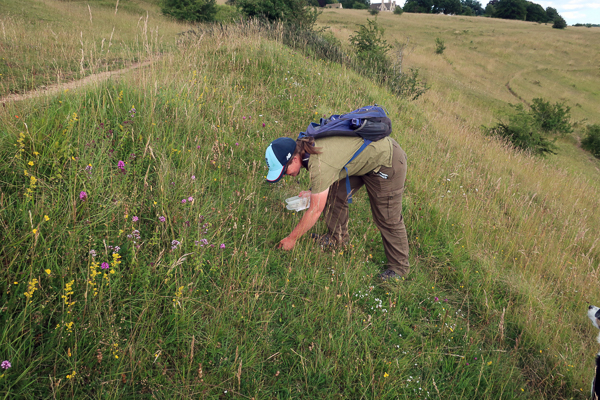
Sarah Meredith releases the first Large Blue caterpillars for 150 years onto the National Trust's Rodborough Common © David Simcox
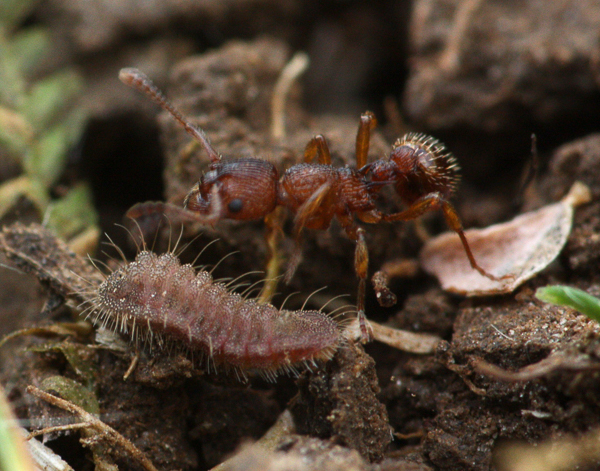
The caterpillar is quickly adopted by the abundant Myrmica sabuleti ants in the restored downland. Consequently, the Large Blue has flown here in high numbers in 2020-22 © Sarah Meredith
The new restoration sites are managed, owned or administered by six partner organisations - National Trust, Somerset and Gloucestershire Wildlife Trusts, J & F Clark Trust, Natural England, and Oxford University. The restorations are led, supervised and monitored by the Royal Entomological Society's David Simcox and Sarah Meredith, who also designed the bespoke management plan needed for each site. Generous funding by the Prince of Wales' Charitable Fund made this possible in 2019-22, including the successful physical re-introduction of Large Blues to two sites in the Cotswolds (after a 150-year absence) and of the Duke of Burgundy to Somerset. Other colonisations occurred by natural spread, as the new restorations link up with previous ones to form interconnected populations across two landscapes.
After this promising start, the next phase of restoration - research and development to extend the Large Blue and associated wildlife across three landscapes in its former stronghold of the Cotswold Hills and gain a greater understanding of the threats posed by climate change - will again be led by the Royal Entomological Society and funded by Natural England's Species Recovery Programme.
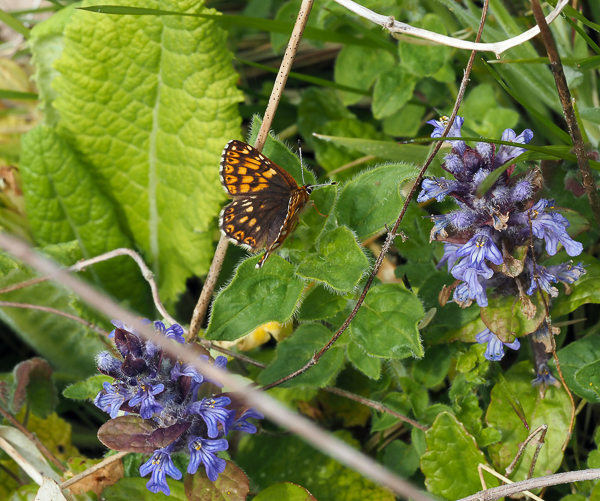
The Duke of Burgundy flying on a new restoration in Somerset in 2022, after an absence of many years. It was reintroduced thanks to Prince of Wales’s Charitable Fund funding as caterpillars in 2021, taken from one of our restoration sites in Cotswolds, where it is also flourishing despite being considered “the next most likely UK butterfly to go extinct” just 5-10 years ago © David Simcox